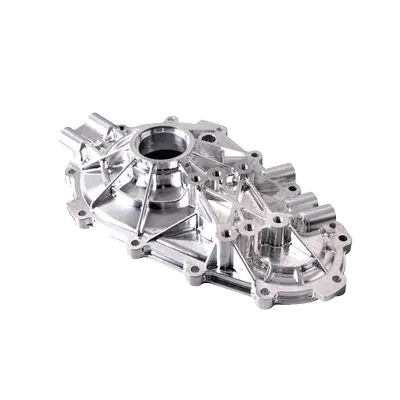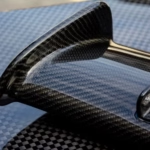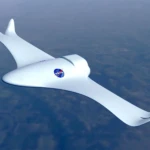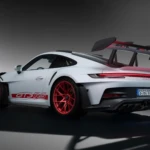Unlock savings: Expert strategies to reduce the cost of CNC processing orders
In today’s highly competitive manufacturing environment, controlling production costs without sacrificing quality is crucial. For enterprises that rely on precise machining of parts, CNC processing costs may escalate rapidly without strategic management. Understanding the leverage that affects these costs is the first step towards substantial savings. This article delves into proven strategies for cutting CNC processing costs and highlights how to work with expert manufacturers like Greatlight Leverages Advanced Technology to achieve affordability and superior results.
Decode the CNC cost equation: Where is your money?
Before optimizing, it is crucial to understand the main cost drivers in CNC machining:
- raw material: The type, grade and quantity of materials (metal alloys, plastics, etc.) significantly affect the basic cost. Exotic or difficult-to-mechanical materials are inherently more expensive.
- Part design complexity: Complex geometry, tight tolerances, thin walls, deep cavity and undercut time increase machining time, requires specialized tools, and increases the risk of discarded parts, all of which increase costs.
- Processing time: Core expenses. The time spent on setup, tool replacement, actual cutting (including slower hard materials) and machine idle time is directly related to cost. Complex parts require longer machining.
- Setup and Programming: Initial CAM programming, fixing/fix design and creation, and machine setup are fixed costs incurred for each job, regardless of the number of parts.
- tool: Wear on cutting tools, especially when working with hard materials or complex functions, needs to be replaced. Professional tools increase costs.
- Complete and post-processing: Secondary operations such as Debring, polishing, anodizing, electroplating, heat treatment or painting add to the cost and time of a separate layer.
- Order volume and batch size: Low-capacity orders or one-time prototypes allocate fixed costs (setup, programming) on fewer parts, increasing unit costs.
- Geographical location and elevated: Labor rates, facility costs and logistics costs vary by region.
Cost-cutting strategies: Engineering efficiency from design to delivery
With this knowledge, implement these strategic approaches:
Manufacturing Design (DFM): Your Main Leverage
- Simplify geometry: Minimize complex profiles, deep bags and tight internal radius that require small, slowly moving tools. Embrace the simpler, functional shape.
- Avoid overly tight tolerances: Specify the critical dimensions accurately, but allow loose tolerances elsewhere (within the functional limit). Stricter tolerance index increases processing time, inspection work and waste rate.
- Larger internal radius: Sharp interior corners require special tools and slower feed. Use radius larger than the radius of the milling cutter when possible.
- Minimize thin wall and depth features: Thin walls are prone to vibration and rupture and require a slower pass. The deep cavity increases tool drape, reduces stiffness and accuracy, and requires slower speed.
- Standardized functions: Use standardized hole sizes, thread types and fits to avoid custom tool expenses. Use the tool library wherever possible.
Strategic material selection:
- Choose wisely: choose Minimum cost Materials that truly meet functional requirements (strength, corrosion, thermal performance). avoid "Overengineering."
- Consider processability: Faster and easier to cut than stainless steel or titanium materials such as free-experience brass or aluminum alloys, thus greatly reducing processing time and tool wear. Discuss alternatives with your supplier.
- Optimize inventory size: Minimize initial block size. Larger stock sizes are more costly upfront and generate more waste (SWARF) and longer processing time to remove it.
Utilize advanced technology: Input five-axis CNC
- Why the cost of 5-axis is important: Five-axis machining allows movement on 5 axes simultaneously. This allows for the machining of complex parts in a single setup (or fewer setups).
- Reduce setup costs and time: Complex parts that require multiple orientations on 3 axes require multiple settings, fixtures and re-alignments. 5-axis elimination or greatly reduces this, reducing labor costs and improving throughput.
- Faster processing speed: Multi-axis tool path allows cutting tools to maintain optimal orientation and contact the workpiece, resulting in higher cutting speeds and material removal (MRR). Complex surfaces are smoother and have fewer steps.
- Reduce fixed: Often, complex 3-axis parts require carefully crafted custom fixtures. Due to its flexibility, the 5-axis can often use simpler standard fixtures to hold the parts.
- Improve accuracy: Minimize settings reduces the potential of human error and alignment bias, thereby improving consistency and reducing waste. Implementing complex geometry becomes simpler and more precise.
- Greverlight Advantage: As a dedicated five-axis CNC manufacturer, we have advanced equipment and deep expertise to take advantage of these cost-saving benefits. By handling complex parts more efficiently in fewer settings, we greatly reduce your overall production time and cost.
Optimize order volume and batch processing:
- Economies of scale: Manufacturing large quantities extends fixed setup costs (programmed, fixed setup) to more parts, greatly reducing unit costs. Even for medium increase in batch size yield.
- Similar parts for batch processing: If possible, combine orders with geometrically similar parts. Shared settings or tools across batches can reduce costs compared to running completely different jobs in turn.
Streamline completion and post-processing:
- Don’t be too tilted: Clearly define the necessary finish levels. Overly smooth finishes (e.g. mirror polish with fine machining marks) require greater labor and time.
- Evaluate color/painting requirements: Is fancy coloring essential? Standard anodizing or simpler finishes cost less than multi-step painting or plating processes. Do the parts need to be completed?
- Greglight’s one-stop service: Our ability to handle machining and post-processing (processing, polishing, anodizing, heat treatment, painting under one roof) eliminates logistical hassle and allows for optimized scheduling and potential bundling discounts.
- Work with expert manufacturers:
- Technical consultation: Experienced manufacturers like Greatlight provide valuable DFM feedback at your design stage, which actively recommends eliminating expensive design flaws before entering production.
- Advanced features: Expertise on efficient technologies (e.g. high-speed machining) and advanced equipment (5-axis, multi-piece systems) inherently provide better speed and cost performance.
- Material expertise: Suppliers can guide the best, cost-effective material choice based on your application and processability.
- Supply Chain Efficiency: Mature manufacturers optimize supply chains for materials and cutting tools, often ensuring higher prices.
Why choose the accuracy of Greatlame?
At Greatlight, our focus as a professional five-axis CNC machining manufacturer is to provide quality quality while actively reducing your total manufacturing costs. We do well with this balanced behavior:
- The most advanced five-axis machinery: Achieve complex single-set production, faster speed, higher accuracy and reduced labor, which can directly solve core processing time and set cost driving forces.
- In-depth engineering expertise: Our team actively works with you to perfect designs (DFM) to produce them quickly and efficiently from the start of the project.
- Comprehensive Materials Library and Procurement: We provide expert guides on cost-effective material selection and leverage our sourcing capabilities to get the best value of raw materials.
- Seamless one-stop sorting: Integrating basic post-processing eliminates the hassle of coordination and hidden costs, ensuring a smooth, predictable journey from billets to part of the finished part.
- Commitment to value and speed: We understand that time is money. Our effective process and fast turnaround capabilities (supported by advanced technology) minimize downtime and enable quality parts to get into hands faster.
Conclusion: Intelligent processing = a lot of savings
Reducing CNC processing costs is not simply about finding the lowest bidder; it’s about strategic partnerships and smart engineering. By implementing DFM principles, selecting materials wisely, understanding manufacturing advantages such as five-axis machining, optimizing order volumes and choosing the right manufacturing partner, you can unlock significant savings while maintaining or even enhancing quality.
Greglight is your ideal partner in this pursuit. Our advanced five-axis capabilities, deep technical expertise and commitment to comprehensive service allow us to not only produce precise metal parts quickly, but also manufacture at the best price. Explore the differences that a true manufacturing partnership can make.
Customize your precision parts now at the best prices! [Link to GreatLight Contact/Quote Page]
FAQ: Cut CNC processing order cost
Q1: What is the biggest change in the biggest cost savings I can make?
one: priority Manufacturing Design (DFM). Simplify the geometry of the part, relax non-critical tolerances, increase the internal radius, and minimize thin walls/deep cavity, thereby greatly reducing the risk of machining time, tool wear and errors – which can greatly reduce costs. Working with Greatlight engineers during the design phase can maximize these savings.
Q2: 5-axis CNC machining with 3-axis 3-axis?
one: Despite the changes in specific parts, the savings mainly come from Reduce setup and total processing time. For parts that require multiple orientations on a 3-axis machine (e.g., a 3-axis separate setup), 5-axis machining done in one setup will often reduce the cost of labor and fixtures by 30-50% or more. Improved accuracy also reduces waste rate. Complex geometry is often processed faster, reducing machine time costs.
Q3: Does ordering with larger volumes really save too much cost per part?
one: Yes, it’s very important. Fixed costs (programming, cam work, fixed settings) are distributed over a higher number of parts. For example, if the set price is $500, order 10 parts for $50 per piece; ordering 100 parts reduces it to $5 per piece. Even a modest increase in batch size can lead to a decrease in cost per unit.
Question 4: If processing time is increased, can you actually save money by choosing cheaper metals?
one: This requires trade-off analysis. A cheap raw material may save $x/kg, but if its less machining power is slower, increases tool wear (requires more frequent tool replacements), or results in a higher scrap rate, the total cost may outweigh the more expensive but faster alloys. Greglight can provide detailed cost simulations for different materials for your specific parts.
Question 5: I need multiple completion processes. Greatlight way "One-stop" Service saves my costs?
one: Bundled services such as machining, polishing and anodizing under one roof eliminate several cost factors:
- Reduce logistics: Avoid excessive goods between different suppliers (shipping costs + risk of damage).
- Simplified scheduling: Internal coordination is faster, avoiding potential delays or downtime between suppliers.
- Quantity Discount Potential: Higher order values may improve your leverage, resulting in better pricing.
- Lower the management head: One PO, one contact point, and one quality assurance process.
Question 6: How fast can Greatlight cost-effectively handle prototypes or small batch orders?
one: While the unit cost of low capacity is inherently higher (due to setup costs), our advanced 5-axis technology is key. Its flexibility can often allow complex prototypes to be modified with minimal fixtures or even processed with a soft jaw, reducing the time/cost of setup rather than the time/cost required for multiple 3-axis machines. Coupled with our focus on rapid prototyping methods, we quickly deliver prototypes at a very competitive pace.

















